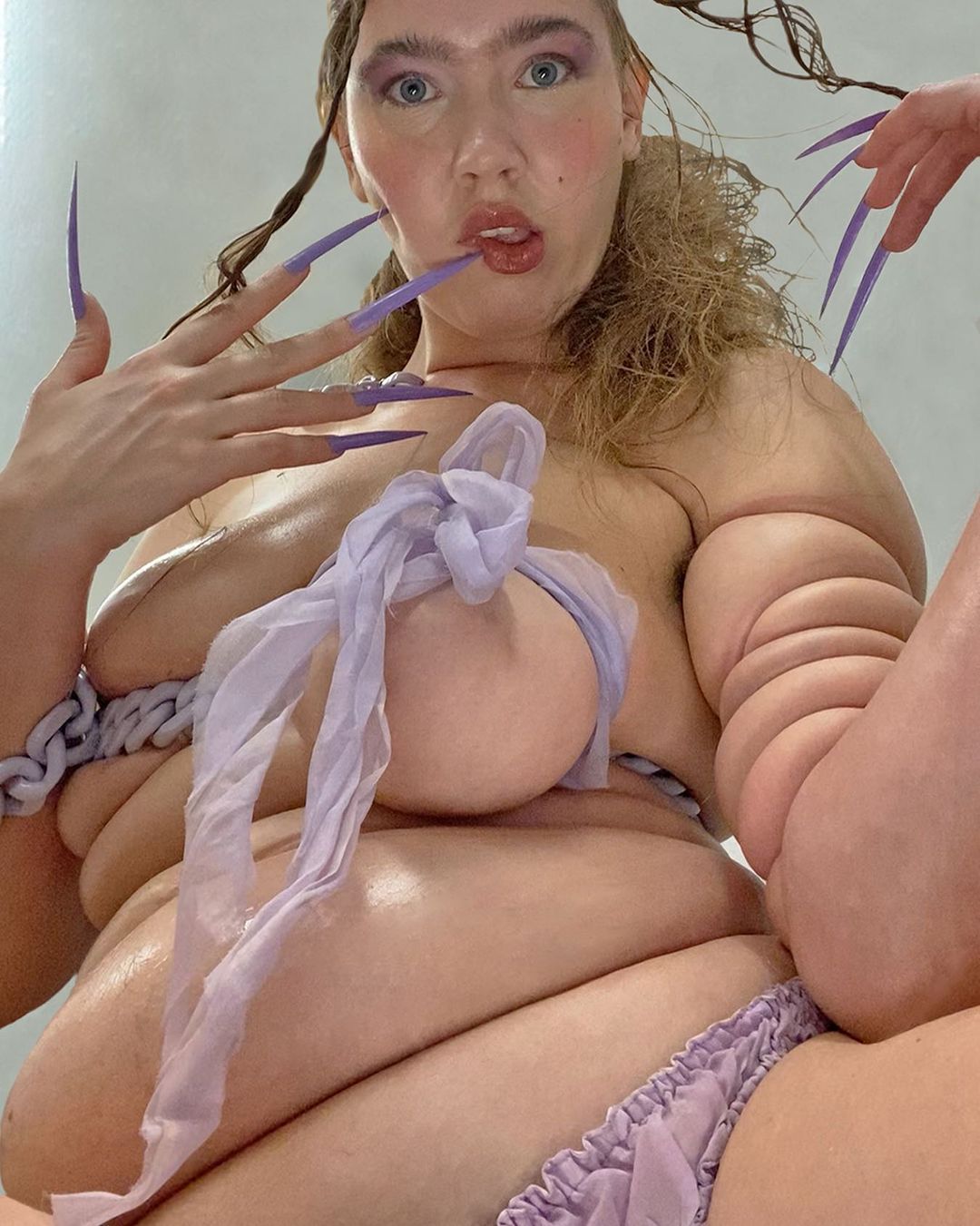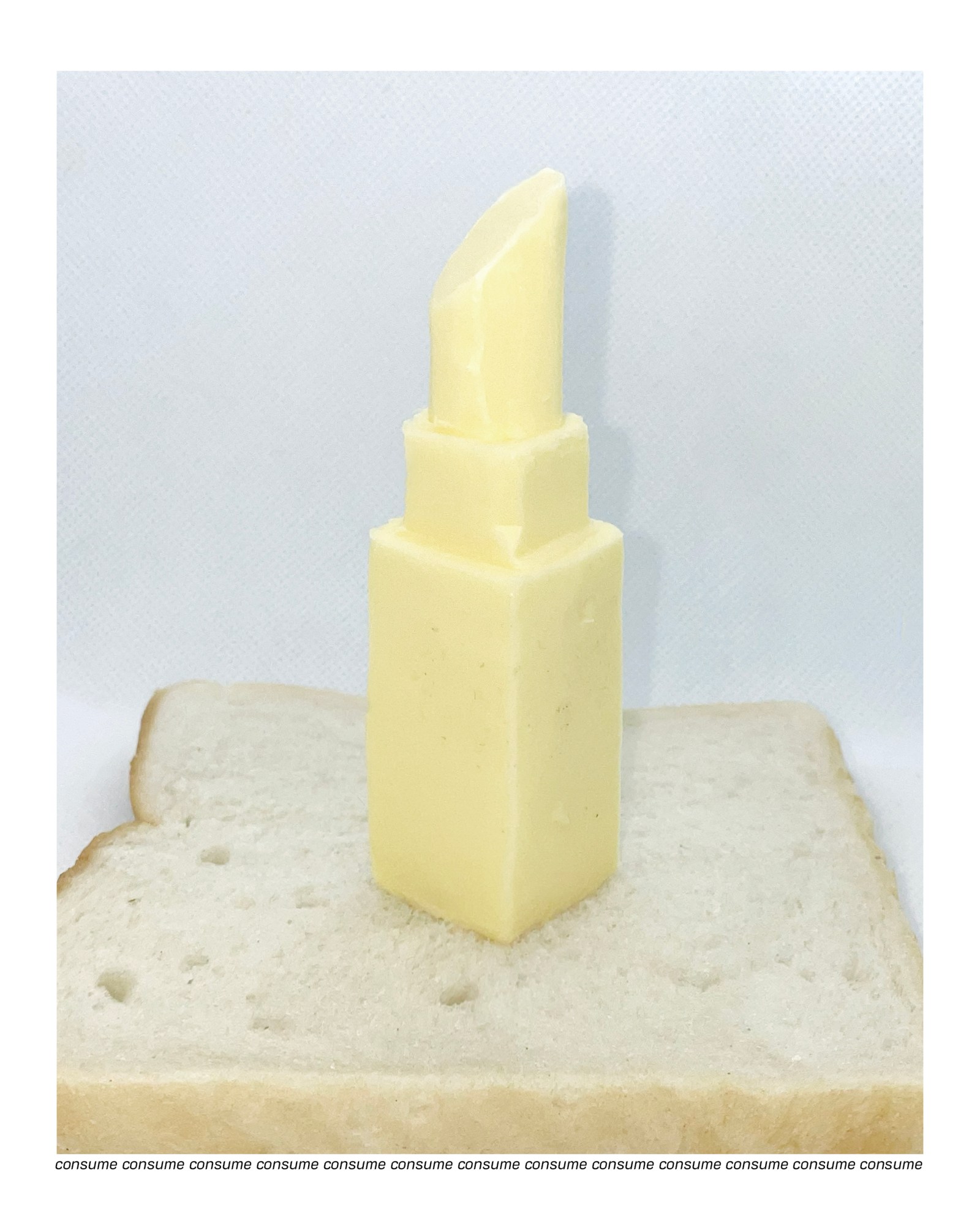For SS23, celebrities and designers alike dabbled in the distorted, from fake botched lip filler on the runway to Doja Cat’s bruised and busted Balenciaga makeup. While “ugly” fashion has been trending for some time, this confirmed the rumblings of what social media trends have been indicating for a while now: being beautiful online is boring. Zooming out far beyond fashion industry trends, it feels like everything popular right now has an unpleasant and disgusting tinge. From ugly cakes and “goblin-mode” memes to Julia Fox declaring “ugly is in”, we’re in a new era of online grotesquery.
Grotesque art is a slippery category that can be traced back to ancient Roman paintings, which first merged the human form with animals. Throughout history, grotesquery has embodied the anti-beauty aesthetic that pushes conventional boundaries and showcases the allure of extreme transformations. More recently, drag artists have been pioneers of what’s become grotesque content online — it’s partly why The Boulet Brothers’ Dragula show is so popular — and, while it’s not being painted across elaborate ceilings today, the movement still lingers through pimple-popping videos and extreme beauty tutorials.


Michaela Stark, a “body morphing” artist, doesn’t consider her work ugly but does intentionally play with concepts of the grotesque. “My art is my way of showing people an alternative view of beauty,” she says. “I think what’s usually considered grotesque in the body is what’s natural, and so I show the body in a way that we can look at nature, rather than just what’s sexually attractive.” For Michaela, this includes long, wavy pubic hair coverings, red body makeup and garments that push her natural curves into new contorted silhouettes.
She believes that we’re continuing the “ugly fashion” trend into the further subversive grotesque categories, in part, due to beauty overstimulation fatigue online. “People want to [move] away from perfectly curated Instagram posts because we’re all really familiar with how fake it is and we all know that’s not how life works behind a camera,” Michaela says. “It’s gotten to the stage where it’s tacky to pretend it’s real.” This, she says, in combination with the rise of short-form video content, is to credit for our love of the obscure.
Earnest Pettie, a trends insights lead at YouTube, says that, despite the curated influencer aesthetic dominating feeds for the past decade, the internet has always been gross. “Our access to gross has just increased because before it was something you had to seek out, and now it enters your world through an algorithm,” he explains, noting that the trend is a reaction to prevailing algorithmic aesthetics. “If you’re scrolling through a feed, things that are bizarre are going to stand out and break the monotony.”
The shock-value nature of grotesque content is exactly what’s led to its current virality. It’s also what continues to push content creators into more extreme and bizarre forms of content creation (cue rage-bait and useless hack videos). This, says Earnest, is a creative experimentation that doesn’t necessarily have the intention of subverting beauty norms (although it often does), but rather is formed from a fascination with playing around with unusual things. This might explain why 10-hour stretched videos of “wide Putin” have ten million views on YouTube and why “sploshing” fetish food content is finding a new, viral audience.
Asking why the internet seems to be turning weirder is like asking why people are weird themselves — humans are often drawn to gross, inexplicable things that we can’t look away from. As such, grotesque content is bound to come in and out of the trend cycle as the pendulum swings from curated to anti-aesthetic aesthetics. The nature of modern social media algorithms, however, means that we’re not only being exposed to more conventional beauty than ever before but more gross and grotesque content too.
Eszter Magyar, the 34-year-old visual artist behind Makeup Brutalism, says that ugly, irregular and different beauty has always existed. “Just think about punk in the late 70s or the club kids in the 90s, but today, from 100 people, 99 are unique and only one is ‘average’, so why in 2022 is [grotesque beauty] working for bigger crowds? Probably because we became so numb as a society that sometimes it is good just to feel something, anything. Even if it’s disgust or discomfort.”


Eszter touches on a point that Julia Fox’s declaration of “ugly” being “in” brings into question; if everything and everyone strives to be shocking and viral, then the anti-aesthetic itself becomes the new standard. It’s also easy for conventionally attractive, thin, white celebrities to perform ugliness through fashion and makeup, without actually dealing with discrimination. After all, “ugly” might be “in” but the industry itself continues to push the heroin chic body type that makes slobbery and ugliness conventionally acceptable. With this in mind, Eszter hopes for more “authenticity and asymmetry” in the future. “Being desirable for the masses will never be revolutionary,” she says.
Subscribe to i-D NEWSFLASH. A weekly newsletter delivered to your inbox on Fridays.
If “ugly” fashion is the mainstream it-girl, grotesque content is her more subversive, rebellious sister. However — while there’s no denying that the internet is being pushed into more alien absurdities — this doesn’t mean that every grotesque trend is actually subversive or sparking larger conversations around beauty standards. Led by algorithms that can encourage extremities, the internet is as gross as it ever was (and as we are), but now it’s reached a new level of virality. This says little about the current state of the world apart from the fact that we’ve grown bored with what’s expected online and soon will become bored of “ugly” again. As Eszter puts it, “freedom will never come from aesthetics, but from mindsets”.


